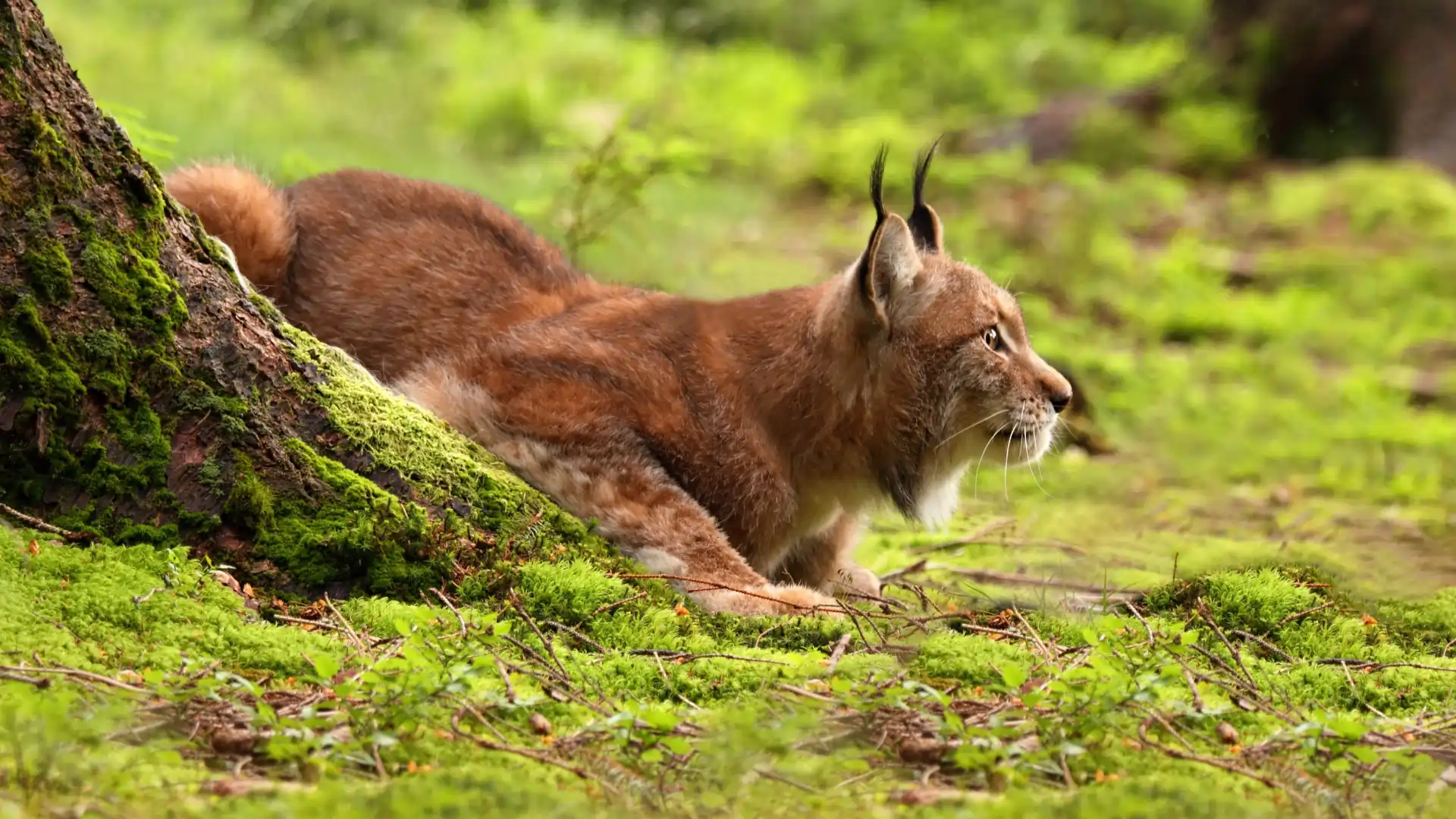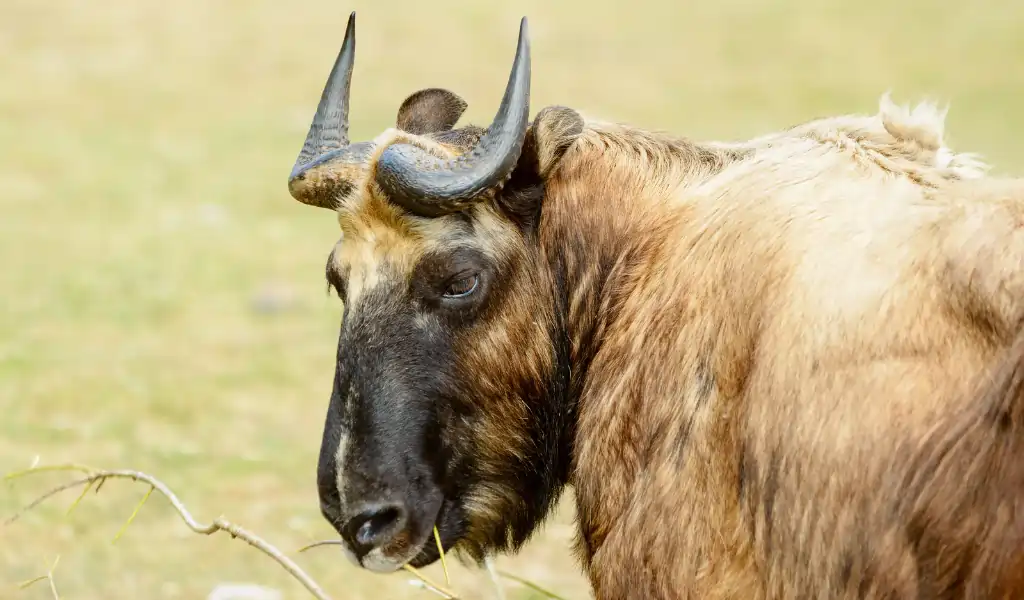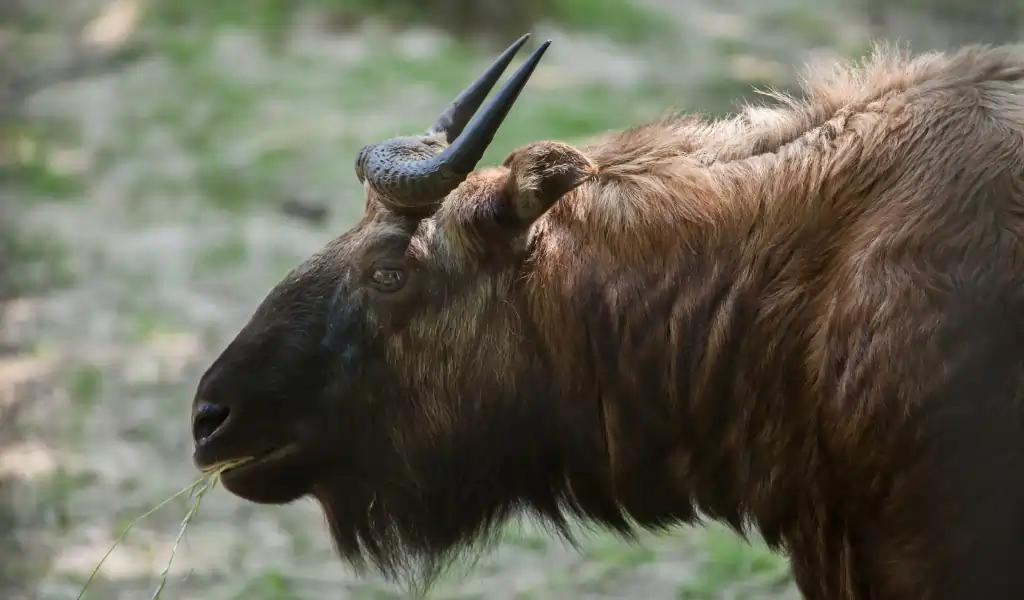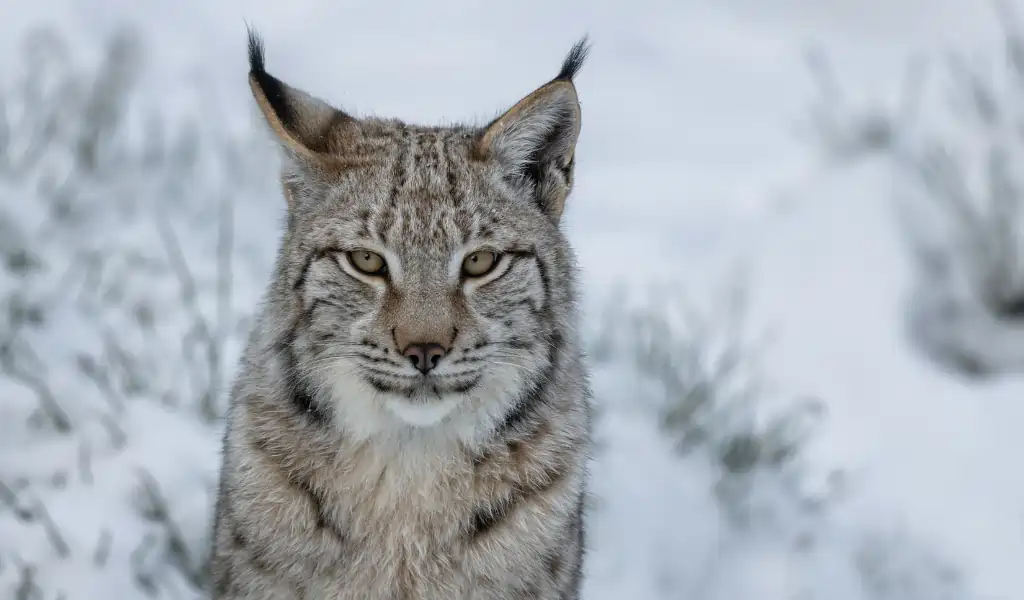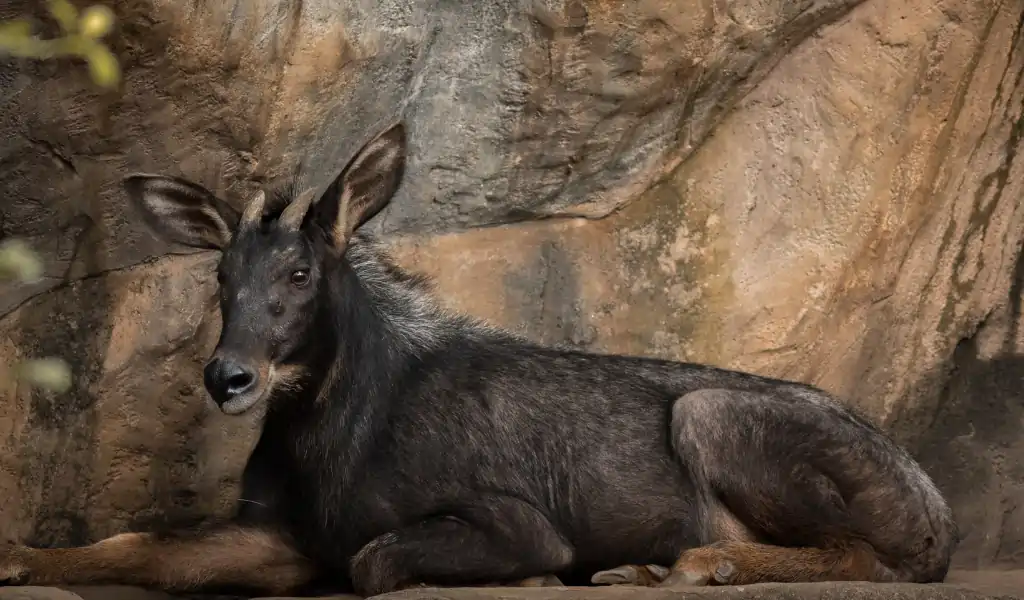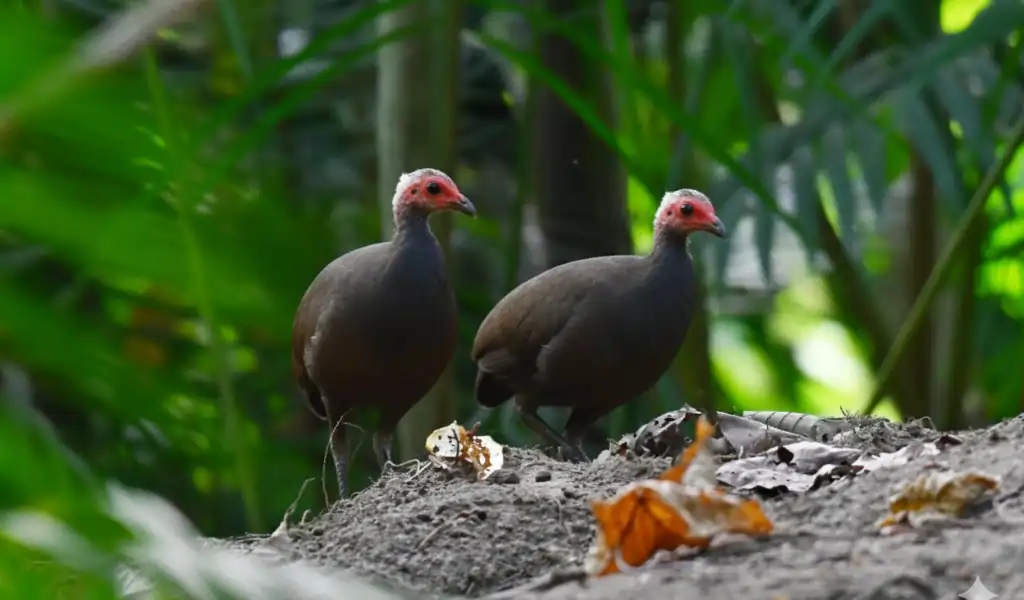Unseen, Unheard, Unbelievable: India’s Hidden Wild Treasures
When most people imagine Indian wildlife, the images are iconic — the roar of a Bengal Tiger echoing through the sal forests of Madhya Pradesh, a herd of elephants lumbering across the Nilgiris, or a one-horned rhinoceros grazing in the grasslands of Kaziranga.
But India’s wilderness hides a far stranger and more secretive cast of characters animals so unusual that even many naturalists pause in disbelief when told they exist within Indian borders.
From goat-antelopes that look like mythological hybrids to tiny deer that could fit in your arms, these species live in the remote corners of the country, often far from tourist trails. Their stories remind us of that India’s natural heritage stretches far beyond the famous and familiar into realms of wonder few ever see.
1. The Takin — The Goat-Antelope of Arunachal
At first glance, the Takin (Budorcas taxicolor) looks like a creature stitched together from spare parts, the head of a moose, the body of a cow, and the agility of a mountain goat. Yet, this remarkable animal is very real, and it roams the misty highlands of Arunachal Pradesh.
It’s hard to imagine such a bulky creature navigating steep slopes, but the Takin moves effortlessly through the rhododendron forests and bamboo thickets of the Eastern Himalayas. Its dense, oily coat helps it survive the bitter cold, while its large snout warms the icy mountain air before it reaches the lungs, an evolutionary masterpiece.
The Takin holds deep spiritual significance in Buddhist folklore. According to legend, Guru Padmasambhava, after finishing a meal of goat and cow, fused the two remains together — and the Takin sprang to life. This story perhaps best captures its bizarre appearance.
Declared the State Animal of Arunachal Pradesh, the Takin stands as a symbol of the region’s wild, mystical essence — a beast both real and mythical, existing in that hazy space where biology and legend meet.
2. The Mishmi Takin — The Mist-Clad Giant
If the Takin is rare, its cousin the Mishmi Takin is almost invisible. Confined to the far-eastern corner of Arunachal Pradesh in the Mishmi Hills, this subspecies is darker, stockier, and even more reclusive.
Few outsiders have ever seen one in the wild. The area it inhabits is one of India’s least explored landscapes, a world of perpetual mist, moss-draped trees, and deep valleys that plunge into the clouds.
The Mishmi Takin is a biological bridge between India, Tibet, and China, revealing how wildlife transcends political borders. Its existence underscores the incredible biogeographic diversity of Northeast India, a region where tropical rainforests, alpine meadows, and temperate bamboo forests merge into a single ecological mosaic.
Spotting a Mishmi Takin in the wild is something even professional wildlife biologists dream of. To see one is to witness the Himalayas themselves come alive, sturdy, mysterious, and ancient.
3. The Himalayan Lynx — India’s Forgotten Cat
Most Indians have heard of leopards and snow leopards, but few know that India has lynxes too!
The Himalayan Lynx (Lynx lynx isabellinus) prowls the cold deserts of Ladakh and the Lahaul-Spiti region of Himachal Pradesh, existing on the fringes of survival where oxygen is thin and temperatures plummet below zero.
This muscular, medium-sized wild cat is instantly recognizable by its tufted ears, thick fur, and short tail tipped in black. Adapted for stealth and endurance, it preys on hares, rodents, and occasionally small ungulates.
Lynx sightings in India are so rare that most records come from camera traps and the occasional photograph taken by researchers or military patrols. Many locals, even those living in the high valleys, regard it as a creature of myth, seen once in a lifetime, if at all.
4. The Serow — The Goat That Thinks It’s a Deer
Imagine a mountain goat with the stance of a stag and the face of a cow, that’s the Serow (Capricornis sumatraensis). This rare and shy mammal roams the steep forested slopes of Arunachal Pradesh, Sikkim, Nagaland, and parts of Uttarakhand, choosing rugged cliffs and dense undergrowth where humans rarely venture.
With its coarse black fur, thick neck mane, and piercing eyes, the Serow cuts an almost mythical figure. Locals often mistake it for a supernatural being or a hybrid of several animals and in a way, it is. Evolutionarily, it stands between goats and antelopes, perfectly adapted to life in rugged terrain.
The Serow is seldom photographed and rarely studied. Its solitary lifestyle and preference for steep terrain make it a mystery even to scientists.
5. The Indian Chevrotain — The Tiny “Mouse Deer”
If the Serow seems strange, the Indian Chevrotain (Moschiola indica) feels almost impossible. This tiny creature, no bigger than a house cat, looks like a miniature deer but is actually one of the most ancient lineages of hoofed mammals. Often called the “Mouse Deer,” it has delicate, spindly legs, a rounded body, and huge eyes that sparkle in the torchlight of the forest floor.
Found mainly in the Western Ghats, parts of Central India, and the Eastern Ghats, the Chevrotain is nocturnal, shy, and nearly silent. It hides in leaf litter by day and ventures out cautiously at night to feed on fallen fruits and tender shoots.
Its behavior is equally fascinating, when frightened, it freezes perfectly still, and if threatened further, it darts away in a zig-zag motion, vanishing into the undergrowth before your eyes can follow.
Because it’s so small and elusive, even many experienced wildlife enthusiasts in India have never seen one, and many refuse to believe that a hoofed mammal this tiny actually exists.
The Chevrotain is a living fossil, an ancient relative of modern deer and cattle that has changed little in millions of years.
Also read – Whispers in Wood: The Fascinating World of Trees and Their Designs
6. The Binturong — The Bearcat of the Northeast
In the dense, emerald jungles of Assam, Nagaland, and Mizoram, their lives an animal that seems to have walked straight out of a fantasy novel the Binturong (Arctictis binturong).
Also known as the “Bearcat,” it’s neither a bear nor a cat, but a large arboreal civet — and one of the few mammals in the world with a prehensile tail, which it uses like a fifth limb while climbing trees.
Binturong’s appearance is bizarre: it has shaggy black fur, a long tail, small, rounded ears, and sharp claws. And here’s the strangest fact, its scent glands produce a smell like buttered popcorn. Researchers say this helps Binturongs mark territory while also attracting potential mates.
Nocturnal and elusive, the Binturong spends most of its life in the forest canopy, feeding on fruits, leaves, and small animals. It plays a crucial ecological role by dispersing the seeds of strangler figs, helping regenerate tropical forests.
But despite its importance, very few Indians have ever heard of it. Ask a wildlife enthusiast about the “bearcat,” and you’re likely to be met with disbelief. Yet in the misty forests of Northeast India, this strange creature thrives, unseen but vital.
7. The Dugong — The Gentle Sea Cow
Deep beneath the turquoise waters of the Andaman & Nicobar Islands, and along the seagrass meadows of the Gulf of Mannar and Palk Bay, grazes one of India’s most mysterious mammals — the Dugong (Dugong dugon).
The Dugong is the only marine herbivorous mammal in the Indian Ocean, related distantly to elephants through an ancient evolutionary lineage. Its smooth, blubbery body and paddle-like flippers give it an oddly graceful presence as it glides through shallow waters, feeding on seagrass.
Many sailors of old mistook Dugongs for mermaids, a legend that persists in maritime folklore. But far from myth, the Dugong is tragically real and critically endangered in India.
Boat collisions, habitat loss, and seagrass degradation have reduced its numbers to fewer than a few hundred individuals.
Yet, for those who have seen one, the experience is haunting, a serene giant moving silently beneath the waves, an echo from a prehistoric world that still lingers in our oceans.
8. The Nicobar Megapode — The Bird That Builds Mounds
Among the strangest birds in the Indian subcontinent is one that doesn’t incubate its eggs with its body at all.
The Nicobar Megapode (Megapodius nicobariensis), found only in the Nicobar Islands, has evolved a unique reproductive strategy, it builds massive mounds of sand, soil, and decaying leaves to act as natural incubators.
The heat generated by decomposition warms the eggs, much like a compost heap, while the parents occasionally check and regulate the mound’s temperature using their beaks. This incredible adaptation is shared by a few species in Australia and the Pacific, but the Nicobar Megapode is India’s only mound-building bird.
Its prehistoric looks, small head, strong legs, and large feet seem to link it to an ancient past, when birds were closer to their reptilian ancestors.
The Megapode’s story is also one of resilience: even after the 2004 tsunami devastated its island habitat, small populations survived and continued their mound-building traditions, keeping alive one of nature’s most extraordinary behaviors.
Conclusion
From the high, misty mountains of Arunachal to the hidden islands of the Nicobar archipelago, India’s wildlife is full of surprises that defy imagination.
These are not the famous stars of safari brochures — they are the background characters of the wild, rarely seen, even more rarely understood, yet every bit as vital to the ecosystem.
Each of these species — the Takin, Serow, Chevrotain, Binturong, Dugong, and others — tells a story of adaptation, resilience, and mystery.
They remind us that India’s wilderness is far from fully known, and that every unexplored ridge or coral bay may still hold life we’ve barely begun to comprehend.
The next time someone says they know all about Indian wildlife, tell them about the Takin that looks like a monk’s miracle, the Chevrotain that walks like a whisper, or the Dugong that swims like a dream.
Because in India, the unbelievable is often real — and the real, utterly unbelievable.
Featured blog – Recovering Asia’s Elephants: 2025 Report Insights


